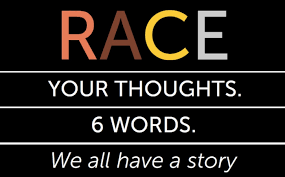
Having Fun While Building Peace
I’m told that I’m pretty funny,1
I’m not the best judge of that. No one can assess how funny he or she is.
But years of course evaluation comments and smiles in face-to-face meetings suggest that my reputation is at least somewhat deserved.
 Oddly enough, however, I hadn’t thought seriously about the role humor could play in peacebuilding until I read Jennifer Aaker and Naomi Bagdonas’ wonderful new book which is seriously entitled Humor, Seriously which I’ve reviewed elsewhere. Although their book focuses on what humor can do in business management, reading it finally convinced me that it could and should have a place in peacebuilding and conflict resolution, too.
Oddly enough, however, I hadn’t thought seriously about the role humor could play in peacebuilding until I read Jennifer Aaker and Naomi Bagdonas’ wonderful new book which is seriously entitled Humor, Seriously which I’ve reviewed elsewhere. Although their book focuses on what humor can do in business management, reading it finally convinced me that it could and should have a place in peacebuilding and conflict resolution, too.
Alas, in order to see that, we have start with two brief detours and consider where humor hasn’t and can’t work.
Bad Humor (For Conflict Resolution)
It’s a bad sign when you have to start a blog post with a disclaimer that you usually put at the end and then add a further caveat before you really get off the ground.
 I always end my posts with a statement that the views represented here are not necessarily those of the Alliance for Peacebuilding. This time, it’s true of any organization I’ve ever worked for. They can all breathe a sigh of relief and stop reading. End of disclaimer.
I always end my posts with a statement that the views represented here are not necessarily those of the Alliance for Peacebuilding. This time, it’s true of any organization I’ve ever worked for. They can all breathe a sigh of relief and stop reading. End of disclaimer.
The caveat is equally obvious. There are times when humor is definitely not the right way to try to build peace.
To see why, spend a few minutes looking at the Cards Against Humanity website. CAH describes itself as a party game for horrible people. I think of it as a kind of mad libs for the intellectually sadistic.
The rules are simple. One player offers a black card with a blank on it while the other fills in the blank with the words on one of the white cards in his/her collection.
The answers almost always come at the expense of someone else who is playing the game.
So much so that I had a hard time finding an example on the internet that wasn’t too offensive to include here.
In short, there are clear “no nos” when it comes to peacebuilding humor.
The most obvious one is trying to get a laugh at the other side’s expense—something which Cards Against Humanity does extremely well.
When you do use humor that falls into Aaker and Bagdonas sniping or sarcastic category, you’re getting your laughs by being malicious.
That may work as part of a standup routine.
However, it is, at best, counterproductive when you are trying to work things out with people you deeply disagree with. If you’re trying to bring disputing parties closer together, this kind of humor tends to drive them farther apart.
So, much of what we might laugh at on the Comedy Channel winds up in a no-go zone for peacebuilders.
Who in his or her right mind would show up for a divorce hearing in which the mediators plan to joke their way through the proceedings? Or a negotiation on police community relations at which the two sides poke fun at each other? Or diplomatic meetings in Warsaw at which Russian or American officials told Polish jokes?
A Slow Start
The discussion so far does lead to two questions which I can answer in the positive.
When does it make sense to use humor in tense situations?
How do you go about doing so?
While I was able to answer these questions in the positive, it actually took a lot of digging before I could find them.
Somewhere along the way in my online career, someone suggested that effective blog posts have images that illustrate one’s points and, if nothing else, break up the boring prose. So, I Googled 2 “peace and Humor.” I expected to find a bunch of cute images to choose from.
Not so.
There was the Ben and Jerry’s Imagine Whirled Peace which I used to start this post. It is one of the many pun-laden names the company has chosen over the years.
I first bought Whirled Peace because I like the name. Then, we discovered that we actually liked.
Then Ben and Jerry’s discontinued the flavor.
So much for humor and world peace.
 I’ve sprinkled a few others in the post, but you will no doubt agree that “a piece of pizza for peace” and “ world peas” t shirts are not likely to make the cold open of the next SNL.
I’ve sprinkled a few others in the post, but you will no doubt agree that “a piece of pizza for peace” and “ world peas” t shirts are not likely to make the cold open of the next SNL.
The State of the Art
This is where Aaker and Bagdonas’ book proved so useful.
They even have a few examples that speak directly to the kind of work that I do.
For example, during the 1990s, the delegations to the annual ASEAN summits each performed a skit at a dinner held during the course of the meetings. One of them featured then US Secretary of State Madeleine Albright and Russian Foreign Minister, Yevgeni Primakov, neither of whom was generally seen as a ball of laughs. Apparently (I couldn’t find a recording), the two delegations did their own combined version of West Side Story which they renamed East West Story, replete with Primakov singing, “I Just Met a Girl Named Madeleine Albright.”
I can assure you that the tradition does exist. The following clip from a different ASEAN summit provides ample (if less than reassuring proof) with the Australian delegation doing a takeoff on a Jimmy Buffett tune and Colin Powell (someone else who would not have been on my list of the world’s great comics) singing (and acting out!) his version of the 1950s hit, “El Paso” as an homage to his boss, George W. Bush who thought of most things in cowboy terms.
These examples also clearly demonstrate that talent is not required under these circumstances. our Content Goes Here
Seriously, though, their points point to five serious ways in which humor can help us peacebuilders out.
 Levity. The first lies in a qualification they make early on in the book. A feeling of levity or even the loosening of tensions probably matters more than humor itself. Indeed, they present ample evidence (they are professors at one of the top business schools, after all) that humor and levity help by putting people at ease.
Levity. The first lies in a qualification they make early on in the book. A feeling of levity or even the loosening of tensions probably matters more than humor itself. Indeed, they present ample evidence (they are professors at one of the top business schools, after all) that humor and levity help by putting people at ease.
I try to do that myself. For example, we in the NGO world have an unwritten rule that we have to start meetings by having participants introduce themselves. If I have a group that has to deal with a tough topic and I know that I have a person who likes to talk a lot in those introductions, I use a tool I adapted (in other words, stole) from Michlle Norris’s NPR project in which he asked people to tell a story about race in six words.
I ask people to introduce themselves in six words. Since I only need four (“I collect interesting people”), I give someone else (whenever possible, my wife) my extra two words. As people struggle to fit their lives into six words, there is a lot of nervous giggling, and you can feel the tension in the room begin to go down.
By the way, your name doesn’t count toward your quota, but where you work does.
Self-deprecating humor. Of all the types of humor they discuss, I’ve found self-deprecating humor to be the most useful as a peacebuilder. When I make jokes about myself, I demonstrate both that I don’t take my self too, too, too seriously. And I begin signaling that I’m willing to talk, maybe even about some core principles. If nothing else, I’m not trying to get laughs at your expense.
Bad brainstorms. Brainstorming sessions, too, are part of the peacebuilder’s coin of the realm. We encourage people to put any idea on the table (or the white board), and no one is allowed to comment on it—positively or negatively. Sometimes, brainstorming sessions get somewhere, but usually they end up with a bunch of platitudes and don’t unleash all that much useful creativity.
But the wonderfully named Astro3 Teller, who runs the Moonshot or X Project lab at Google, flips the idea of brainstorming on its head. He asks his team to propose bad ideas and has discovered that when they giggle while debriefing them, they sometimes come up with truly creative ideas.
Here’s one delightful result of bad brainstorming. It is said that Mo Mowlem, who was the British Secretary of State for Northern Ireland during the negotiations that led to the Good Friday Agreement would tear off her wig and throw it at whoever had come up with a particularly preposterous idea (she was bald and wearing a wig because she was undergoing chemotherapy at the time).
 Yes, and. Perhaps the most embarrassing thing that happened to me while I was writing this post war cane when I remembered that I had written an entire blog post on improv and hadn’t mentioned its humorous side! I had recently read Second City’s book, Yes, And, which it uses in its organizational development practice. I completely overlooked the fact that Yes, anding someone can also lead to riotously (sorry about that choice of words) funny outcomes that can help defuse tensions in their own right.
Yes, and. Perhaps the most embarrassing thing that happened to me while I was writing this post war cane when I remembered that I had written an entire blog post on improv and hadn’t mentioned its humorous side! I had recently read Second City’s book, Yes, And, which it uses in its organizational development practice. I completely overlooked the fact that Yes, anding someone can also lead to riotously (sorry about that choice of words) funny outcomes that can help defuse tensions in their own right.
Empathy, trust, and creativity. That leads to the most important thing that all experts on the social implications of humor point to. Humor and laughter have indirect consequences that are at the heart of everything we know about conflict resolution. When we laugh together, it becomes easier to empathize, if not sympathize with each other. When you see my imperfections and my humanity, it is easier to build trust. And, as the yes, and exercises suggest, levity and creativity go hand in hand.
Why Humor Matters
 World Peas tee shirts almost certainly won’t cut it. Besides I’m allergic to peas.
World Peas tee shirts almost certainly won’t cut it. Besides I’m allergic to peas.
However, humor and levity can take peacebuilding a long way.
If I can show you that I can laugh at myself or at the situation we find ourselves in, I can begin opening the door to finding a cooperative solution. If nothing else, we can both begin to relax and begin to see that we share the problem we face and that I see that it is at least partially my fault–and not just yours.
Laughter alone won’t solve many problems. But, it takes make it a lot easier to do so.
The views and opinions expressed in this article are those of the author and do not necessarily reflect the official policy or position of the Alliance for Peacebuilding or its members.
Also published on Medium.
- This is the first time I’ve used footnotes in a blog post. It’s fitting that the post is about humor.
- That’s not quite true. On one of my devices, I still use Google. On the other, I’m trying out Neeva which is an ad free search engine that doesn’t sell your data. Why that’s a cool idea will be the subject of a later post.
- He comes by his name honestly. It was supposedly given to him because of his flat top hair cut which he sported in his high school days. He also could have gotten it because his maternal grandfather was a leading French mathematical economist and his paternal grandfather is usually given credit for designing the American hydrogen bomb.
